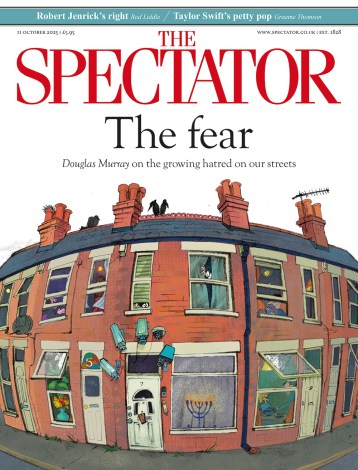When I learned that the Prime Minister was thinking of launching a new Help to Buy scheme, my first response was ‘Oh no’. My second response was the same, with the caveat that we are in the last days of campaigning for local council elections, with a general election a year or so down the line, so anything that looks like a political promise now may not actually happen.
If it does though, my objections will be the same as when David Cameron and George Osborne launched the first version – except there is now more evidence of Help to Buy’s deleterious effects. ‘Help to Buy Mark I’ mostly assisted those with the means to buy anyway. For everyone else it pushed up house prices, then kept them higher than they might otherwise have been. It is hard to see how the effects of a Mark II would be significantly different.
The way England buys and sells property needs to change, and there are plenty of models to choose from
It would be no more than a sop to those (mostly metropolitan) generation warriors who claim that they, or their children, face extortionate rents, cannot get a foot on the housing ladder, and may not own their own home until they are in their fifties and perhaps not even then. Frankly, I doubt very much that is true. Basic market economics determines that if houses are unaffordable, the prices go down. Help to Buy pushed them artificially up.
Far more effective, it seems to me, would be for the government to address the problem from the other side. If any intervention is needed, it is not in buying, but in selling, and for two aspects in particular.
The first concerns the actual process of buying and selling. And I write with particular feeling here, as the sale of my flat has just collapsed after six months. The proposed sale had managed to survive the Truss-Kwarteng mini-budget, its reversal by Jeremy Hunt and the inflation and interest rate rises partly connected with the Ukraine war. Exactly what caused it to fall through just days before the crucial exchange of contracts is not entirely clear, but the point is that it is entirely possible for this to happen under the English system where no money is exchanged and the sale is not legally binding until contracts are exchanged.
My ordeal was unusually long, even by English standards. But most of the paperwork and the conveyancing cost falls on the seller (and I now have to start again). The buyer pays nothing except their own conveyancing costs and is under no obligation to proceed until all the paperwork has been finalised. That might seem a prudent system, but it creates delays and uncertainty – and costs – that can keep whole chains in suspense until the magic hour of exchange, and then completion when money changes hands.
Most countries, including the United States and many continental countries, handle the selling of property with far fewer uncertainties and so much more quickly than is common in England. The Scottish system might have its flaws, but at least once an offer has been accepted, the agreement is binding with very few exceptions. The way England buys and sells property needs to change, and there are plenty of models to choose from.
The other point of a Help to Sell scheme would be to encourage downsizing. A big grievance relates to older people supposedly rattling around in the big family house and resisting all hints to find something ‘more suitable’. Now some people simply do not want to move. But there are two major factors that discourage many people from selling their multi-bedroom houses with gardens.
The first is that they cannot find anything to move to. Much of the emphasis on building has been on helping those first-time buyers via ‘starter homes’ and Help to Buy subsidies. There are retirement developments, but many are not convenient for shops and services. Other sorts of smaller houses and flats may not be suitable, lacking lifts or space for mobility aids if and when they become needed. The great British bungalow, as well as subsidised sheltered housing, are both becoming an endangered species.
Purpose-built retirement accommodation is also expensive per square foot, when compared with other types of housing – no Help to Buy here. And no Help to Sell either. Restrictive conditions may mean that those selling up, or their heirs, can find they have no alternative but to sell at a substantial loss.
The other bugbear is stamp duty – the tax levied at an incremental rate on sales above £250,000. Someone selling a million-pound house (not such an exception in the south-east) and buying a retirement home in the same area for, say, £800,000, will have a bill of more than £27,000 to pay in stamp duty.
They can afford it, of course, from the proceeds of their sale, which is why sympathy for their ‘plight’ may be limited. But to someone with bequests to children and grandchildren in mind, this looks like wasted money, and it is regularly cited as one of the biggest disincentives to ‘downsizing’. That it particularly affects homes in high-price areas means that the disincentive for older people to vacate family homes is greatest where, arguably, those family homes are most needed.
What to do about this, of course, is difficult – more difficult that reforming the sale process (which should have been done decades ago). Abolishing or reducing stamp duty for downsizers could cause resentment among those who still have to pay it. The tax is also hard to avoid and so a nice little earner for governments.
If only marginal changes can be made to the tax, however, increasing the choice and desirability of homes suitable for older people – in convenient positions, with enough space, and without lease-terms that make them hard to sell – should not be beyond the wit of ministers or council planners or construction companies. All it would take would be for the government to move away from helping first-timers buy a shoe-box and to train its sights instead on helping potential downsizers to sell, thus freeing up the market down the line.







Comments